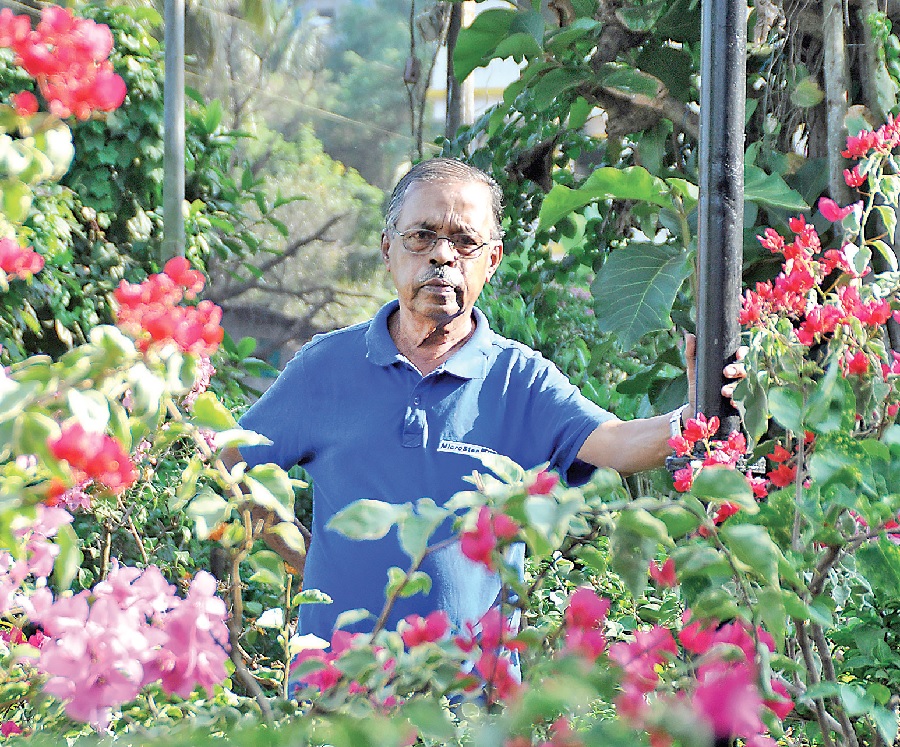Breaking various myths regarding the gardening activities in the month of August, the noted landscape artist and gardening consultant from Goa - Ashok Dande - offers valuable tips and guidance to nature lovers about what care to be taken while planting and replanting the saplings

Falling in love with Mother Nature comes easy to Goans who are blessed with a green surrounding all over the State. Though Goa has bountiful rains and is full of greenery all the year round, still it is the monsoons that gardening activities are at its peak. People tend to plant new saplings in and around their living spaces. As the monsoon sets in, the nursery market gets busy selling varieties of plants - flowering, fruiting, ornamental, medicinal, herbal value and also the ones that are useful for kitchen vegetable garden. But unfortunately very few of these plants that are bought haphazardly and planted, seem to survive. Many of them are seen having stunted growth or just wither and dry up.
What's the reason? Goa's noted landscape artist and gardening consultant Ashok Dande who enjoys sharing his knowledge of gardening of sixty plus years with enthusiastic learners. Dande who went organic 40 years ago, asks to follow the basic modalities of gardening while planting new saplings and breaks the common myth that plants will grow automatically in the monsoon.
Buy a plant only after judging its quality because if care is not taken it will die or show stunted growth and one is sure to lose time, money, manpower and interest in gardening. "June to mid-August is not time for landscape gardening. By planting tiny or fully developed saplings or seedlings directly in the ground will kill them. Avoid application of manure to the trees or digging of the wet soil as once the soil turns mucky, it loses its fertility, texture and tilt. There are more chances of losing the plants and efforts due to water logging, torrential rains, high velocity winds and inclement weather," he mentions.
"The best time to carry on the above activities should begin only by the mid-August when the fury of monsoons and the winds has subsided and when the soil, the ‘Mother Earth' is in a fully contented condition being impregnated with multiple micro-organisms and earthworms thereby making it rich in nutrients, the environment, in its lush green growth and verdant condition and the air in its purest form," guides Dande.
However June to mid-August is the most appropriate, favourable, safe and highly beneficial period of the year to undertake activities like cutting, layering, grafts, leaf cutting, re-potting or re-planting of the pot plants. For kitchen gardens and home gardens, growing vegetables or crops (rice and cereals) or sowing seedlings for propagation of plants can be done. After this a fresh dose of manure and soil mixture should be added to the existing soil, thinning and trimming of overgrown branches and using them as cuttings to grow more plants and pruning of mango and other trees could be done. "It's time to re-pot, re-plant, manure and propagate Anthurium, Orchid, Begonia and African violet (Saintpaulia)," reminds Dande.
Obtain seedlings and saplings and if they are grown sub-standard soil in small plastic bags then replant them in a slightly bigger container once it starts raining. "If the soil is fertile and not sticky, retain it," says Dande, offering his important clue - "These plants could be planted retaining the soil around the roots in case the soil is not clayey with the following planting mixture - two parts of good garden earth, with smaller stones, one part of sand or fine gravel, one part of broken earthen tile/pot pieces of 20 to 25 mm size and one part of compost. Avoid wet soil. Keep the plants close to each other in a safe place or a greenhouse, exposed to the rains but at the same time with protection from direct sun."
The tall growing and/or fruit bearing trees (like coconuts) should be grown into bigger bags with perforations at the bottom and sides, planting mixture being the same type as stated above. Only after taking proper care for one or two years and feeding them with liquid manure and compost at regular intervals till they grow into healthy specimens, that they can be planted in their permanent pit on the ground.
From second half of August to the end of September, these well grown saplings can be exposed to direct sunlight or partially covered from the direct sun after planting in the ground, for one more month. Thus these saplings will have strong and vigorous growth and will start yielding profusely in a short time and would maintain a short stature. "This is my secret of getting my trees yield within two years and coconuts after 3-3.5 years at a much low height," shares Dande.
Never plant the newly acquired tiny little plants or saplings directly in their pits between May to August as they will not be able to sustain the vagaries of nature. Due to water logging and heavy downpours or prolonged dry spells in no rain period, the plants will perish or show stunted growth. "Follow my method to grow healthy, long lasting trees in your garden," says this organic farmer, ever willing to share his secrets of maintaining harmonious balance with nature for the betterment of humankind.